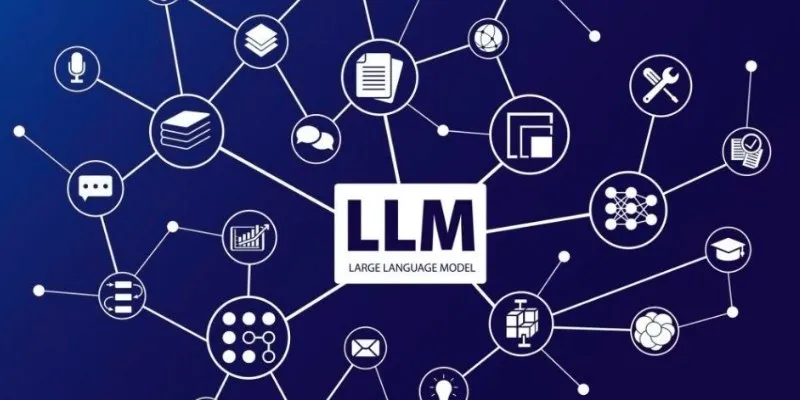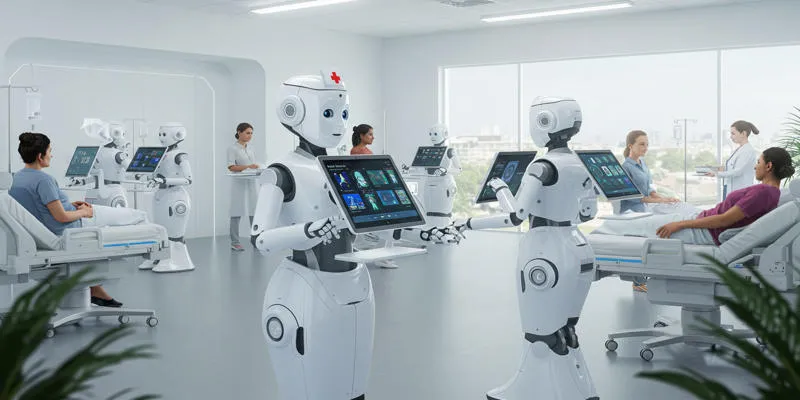Autonomous robots are revolutionizing operations across a wide range of enterprises. Companies increasingly use robotic solutions to simplify tasks, increase output, and save running expenses. These fast and precise machines transform work environments, from offices to warehouses. Businesses today depend on autonomous robots for manufacturing , shipping, and even customer service.
As technology develops, the trend of corporate automation, including robots, is picking up speed. Intelligent systems can now manage repetitive tasks more quickly than human effort. With real-time data, steady performance, and scalable processes, companies are staying competitive in the ever-advancing digital era. Work is evolving, and autonomous robots are leading this enterprise transformation.

Autonomous Robots in Manufacturing
Manufacturing was among the first sectors to integrate autonomous robots. Today, robots accurately handle repetitive assembly line duties, reducing human errors and significantly increasing efficiency. Machines operate without breaks, accelerating production. AI-driven robotic arms tackle complex tasks by analyzing and adjusting data in real-time. Businesses benefit from lower labor costs and reliable productivity.
Robots also support predictive maintenance, preventing breakdowns and identifying machine wear. These versatile systems adapt to changing needs, leading to fewer defects and improved quality control. By undertaking hazardous tasks, robots create safer environments, allowing human workers to focus on high-skill, creative tasks. Automation enhances global market competitiveness, transforming both large-scale operations and small companies. Faster returns and scalability make autonomous robotics a core corporate strategy in production today.
Enhancing Warehouse Logistics and Inventory Management
Autonomous robots play a crucial role in warehouse logistics, moving products efficiently and without delay. Drones and autonomous guided vehicles (AGVs) monitor inventory, reducing human errors and lost goods. Smart robots quickly pick and sort items for distribution, boosting customer satisfaction and minimizing shipping delays. They work seamlessly with warehouse control systems, enabling real-time monitoring and optimization of operations.
Automated systems manage shelf placement, optimizing storage capacity and determining the best routes for quick access. Robot-generated data analytics provide insights for demand forecasts and supply chain decisions. With the ability to operate around the clock and in low-light conditions, robotic systems effectively manage peak demand times and labor shortages. These systems enhance scalability, accuracy, safety, and efficiency, making enterprise automation with robotics essential for modern supply chain success.
Customer Service and Frontline Applications
Service robots enhance customer-facing roles in airports, hotels, and banks by assisting with simple inquiries, check-ins, and information searches. They improve service experiences and reduce wait times. AI enables robots to respond naturally and understand user input effectively, while facial recognition allows for personalized assistance. Companies benefit from 24/7 client service without human fatigue.
Robots handle multilingual communication effortlessly and support accessibility features for those with special needs. In retail stores, they suggest products based on customer behavior and provide real-time feedback to management. Frontline workers are relieved of monotonous tasks, allowing them to concentrate on complex interactions. Robots maintain consistency under pressure, eliminating mistakes and mood-based variations, thus enhancing the brand image through technological innovation.

Facility Maintenance and Environmental Monitoring
Robots are aiding companies in maintaining offices and structures. Cleaning robots efficiently sanitize spaces, avoiding obstructions and following sophisticated maps. Security robots monitor buildings, guarding against potential threats and alerting staff to unusual activities. Maintenance robots detect early HVAC or plumbing issues, enabling predictive repairs that reduce operational costs and downtime. Environmental sensors track temperature and air quality, allowing automatic adjustments for staff comfort.
Robots collect and document energy consumption data, supporting sustainability and waste reduction. Constant monitoring enhances facility intelligence and safety. Robots operate in hazardous environments, reducing human exposure to danger and ensuring compliance with safety regulations. Scalable for both small workplaces and large campuses, facility robots offer affordable maintenance and superior control over internal systems.
Autonomous Robots in Data Centers and IT Operations
Modern data centers utilize robots for crucial infrastructure management tasks, such as cable organization and hardware installation, demanding precision. Faster fault detection reduces downtime, while thermal imaging helps identify overheating equipment, allowing issues to be addressed before damage occurs. Alerts sent to IT staff facilitate rapid response capabilities. Robotic systems repair faulty drives and components, ensuring continuous operations.
AI-powered robots navigate low-light and confined spaces, reducing the need for manual checks and improving efficiency. For remote troubleshooting, they provide records and video streams, ensuring system compliance and security. Programmed robots are the only ones permitted to access secure areas, supporting disaster recovery strategies and helping replicate scenarios. In IT and logistics, autonomous robots deliver unmatched uptime, saving money and enhancing the protection of digital infrastructure.
Conclusion
Autonomous robots are transforming business processes across numerous industries, from customer service desks to manufacturing lines. To remain competitive and efficient, companies are embracing enterprise automation with robotics. The key advantages include task accuracy and real-time decision- making. Robotic solutions for business reduce human error, enhance worker safety, and drive innovation. In logistics, IT, and service sectors, autonomous robots are shaping the future of corporate innovation. Businesses that adopt robotics technologies become agile and resilient. As robotic systems advance, their role in business will become increasingly essential and transformative.
 zfn9
zfn9























